Grammar schools have been a controversial topic in the UK for decades. These state secondary schools select their pupils based on an examination taken at age 11, called the “11-plus“. While some argue that grammar schools offer excellent academic opportunities for bright students, others criticise the system for perpetuating class division and disadvantaging students who don’t pass the test.
In this article, we will explore the history of grammar schools, the reasons behind the changes to the system, how grammar schools select their pupils, and the current state of grammar schools in the UK.
What are Grammar Schools?
Grammar schools are a type of secondary school that has been a part of the education system in the United Kingdom for hundreds of years. Originally, they were schools that focused on teaching Latin and Greek, and they were typically reserved for boys who were preparing for university. Today, grammar schools still have a reputation for academic excellence and are known for offering a rigorous education to their students.
The structure and admission requirements of grammar schools can vary depending on the region, but they generally select students based on academic ability through an entrance exam known as the “11-plus.” Different areas maintain their own traditions of selective education, with Manchester’s grammar schools representing some of the most academically rigorous options in the northern part of England.
Grammar schools have been the subject of much debate and controversy over the years, with some arguing that they provide opportunities for social mobility and academic achievement, while others argue that they perpetuate inequality and can be detrimental to students who do not pass the entrance exam. Despite these differing opinions, grammar schools remain an important part of the education system in the UK.
Admissions to Grammar Schools
To gain a place at a grammar school, students must usually take an entrance exam known as the 11-plus. This exam is designed to assess a student’s verbal and non-verbal reasoning abilities, as well as their mathematical and literacy skills.
The exact format and content of the 11-plus exam can vary depending on the school and the examining authority. Some schools may also take into account a student’s performance in primary school and other factors, such as their socio-economic background, when making admissions decisions.
Competition for places at grammar schools can be fierce, particularly in areas where there are only a few such schools. Read how to help your child with 11 plus revision. Now let’s explore the best grammar schools in England!
Top 10 Grammar Schools in London
1. The Henrietta Barnett School

The Henrietta Barnett School is a girls’ grammar school located in Hampstead Garden Suburb, London. It was founded in 1911 and became an academy in 2021. The school has consistently been named among the top state schools in the country and is known for its academic excellence and enrichment opportunities
The school has recently completed ambitious refurbishments including eight science labs, a new music and drama school, an art and design centre, and an extended library. Students are driven by a thirst for learning and a strong sense of pride in belonging to the diverse, inclusive, high-performing, friendly and supportive school community.
Admissions
The school admits 104 Year 7 students each year and the 11 plus registration opens on April 28th, 2023. The first-round exam takes place on September 4th and 5th, 2023. The second round of test takes place in early October 2023.
The application deadline for the local authority form is October 31st, 2023, and national school offer day is on March 1st, 2024.
Exam Results
The A-level results in 2021 were 97.3% A*–B and GCSE results were 98.8% 9/8/7. The school is ranked first in the National rank (Sunday Times Parent Power).
2. Queen Elizabeth’s School
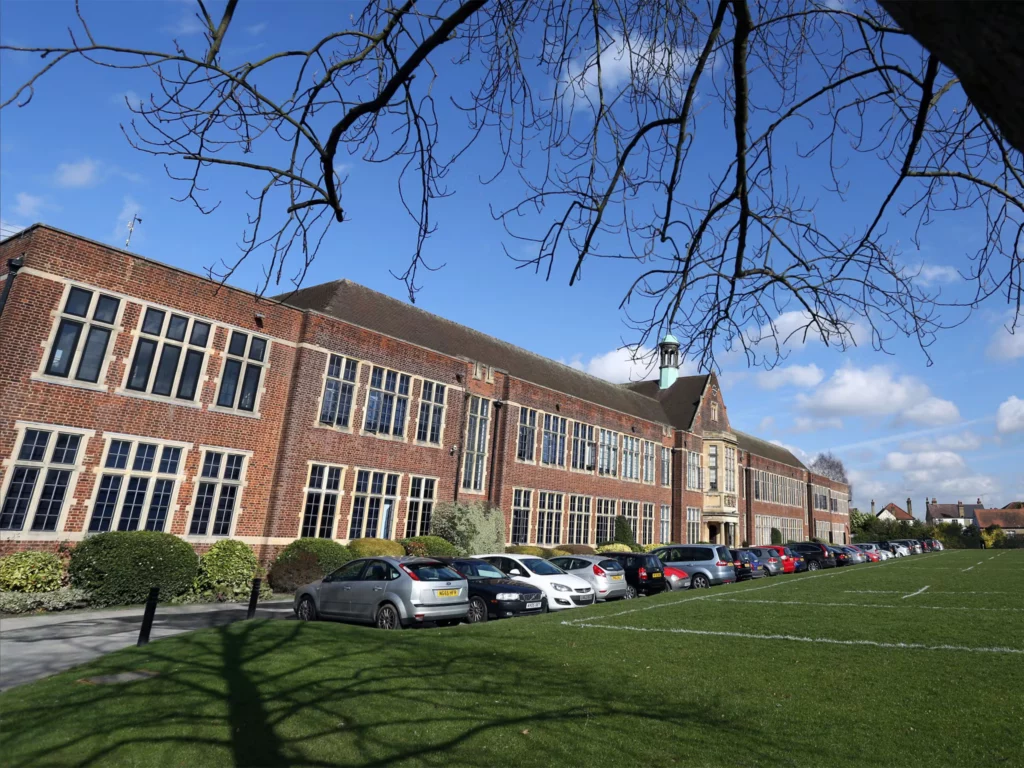
Queen Elizabeth’s School is a prestigious boys’ grammar school located in Barnet, London. Founded in 1573, the school is consistently ranked as one of the highest-performing schools in the UK, across both state and independent sectors.
The school is committed to offering an outstanding academic programme and developing well-rounded students of excellence. It provides a range of opportunities for boys to excel in music, sports, arts, and languages.
Admissions
The school offers 1,292 places to students, and for Year 7, there are 180 places available.
The 11 plus registration for Year 7 admissions opens in early May 2023. The exam takes place in mid-September 2023. Registration closes in mid-July 2023, and the local authority application form deadline is 31st October 2023.
11 Plus Exam Format
The 11 plus exam for Queen Elizabeth’s School is provided by GL Assessment and consists of two papers, one for English and one for Maths. Both papers last for approximately 50 minutes and consist of multiple-choice questions. The pass mark for the 11 plus exam is a score of 210 or higher, and the 180 highest-scoring applicants are offered a place at the school.
Exam Results
The A-level results in the other school in 2021 were 98.3% A–B, while the GCSE results were 95.7% A/A/9/8/7.
3. Wilson’s School

Wilson’s School is an all-boys grammar school that was established in 1615. It is located at Mollison Drive, Wallington, SM6 9JW and is under the local authority of Sutton Council.
Admissions
The school has 1,301 pupils, and the number of places available in Year 7 is 186. The school shares the entrance test and registration process with the five other grammar schools in Sutton, and the entrance test is called the Selective Eligibility Test (SET).
The test is followed by the school’s own second-stage exam. The common application form (CAF) deadline is on the 31st of October 2023, and the national school offer day is on the 1st of March 2024. The school’s term dates for 2023-2024 are from the 6th of September to the 21st of December 2023 for the autumn term, from the 8th of January to the 28th of March 2024 for the spring term, and from the 15th of April to the 12th of July 2024 for the summer term.
Exam Results
Wilson’s School is known for achieving some of the best A level and GCSE results in the country, with 97.9% A*–B in A levels and 95.4% 9/8/7 in GCSEs.
4. The Tiffin Girls’ School
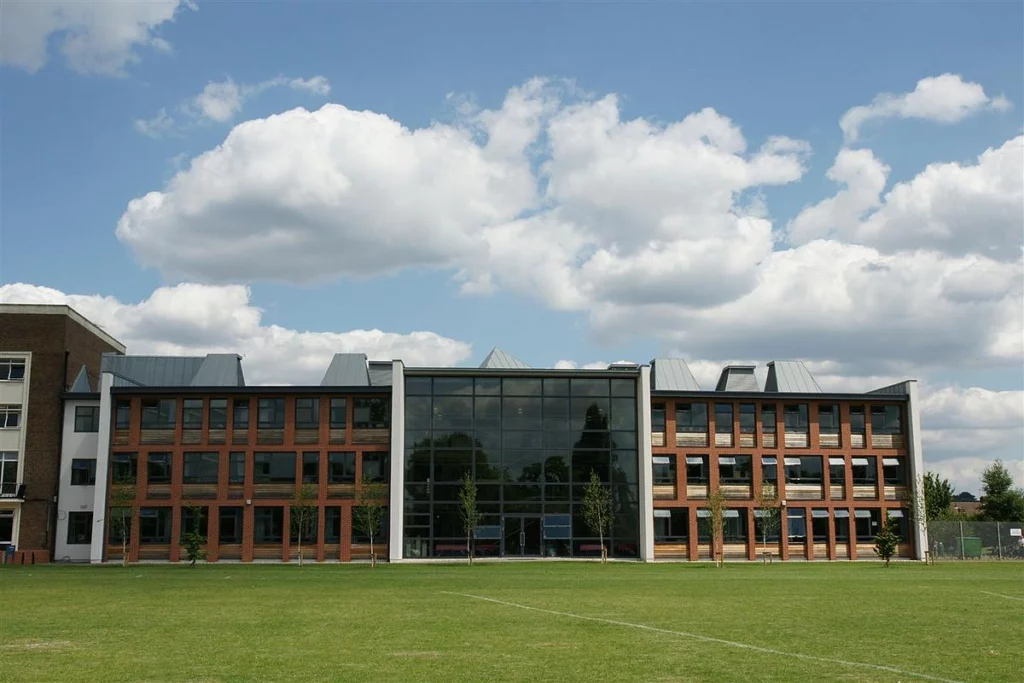
The Tiffin Girls’ School is a five-form entry girls’ grammar school located in Kingston upon Thames, Surrey, in the London Borough of Kingston upon Thames. It is consistently rated as one of the top state schools in the country and has recently been rated ‘Outstanding’ by Ofsted.
Admissions
The school has 1,219 pupils and offers 180 places for Year 7 students each year. The school uses the 11 plus test format for admission and gives high priority to Looked After children, pupils in receipt of Pupil Premium, and those living within their ‘Inner Area.’
Registration for the stage one transfer test opens on Tuesday 7th June 2022 and closes on 1st September 2022. The test will be held on Thursday 29th or Friday 30th September 2022 at Tiffin Girls’ School. The school aims to notify parents of the outcome of the stage one test by Monday 17th October 2022. Parents will be informed in March whether their child has been offered a place at Tiffin Girls’ School.
11 Plus Exam Format
The 11 plus exam for Tiffin Girls’ School is administered in two stages. The first stage is a multiple choice test that covers English and maths and is conducted by GL Assessment. The second stage is a school-written test that includes written tasks in English and maths based on the national curriculum up to the end of Year 5. The school uses both test results to select pupils from those within the top 350 ranked scores from their stage two tests.
Exam Results
The A-level results in 2021 for this school were 97.1% A–B and the GCSE results were 94.9% A/A/9/8/7.
5. Altrincham Grammar School
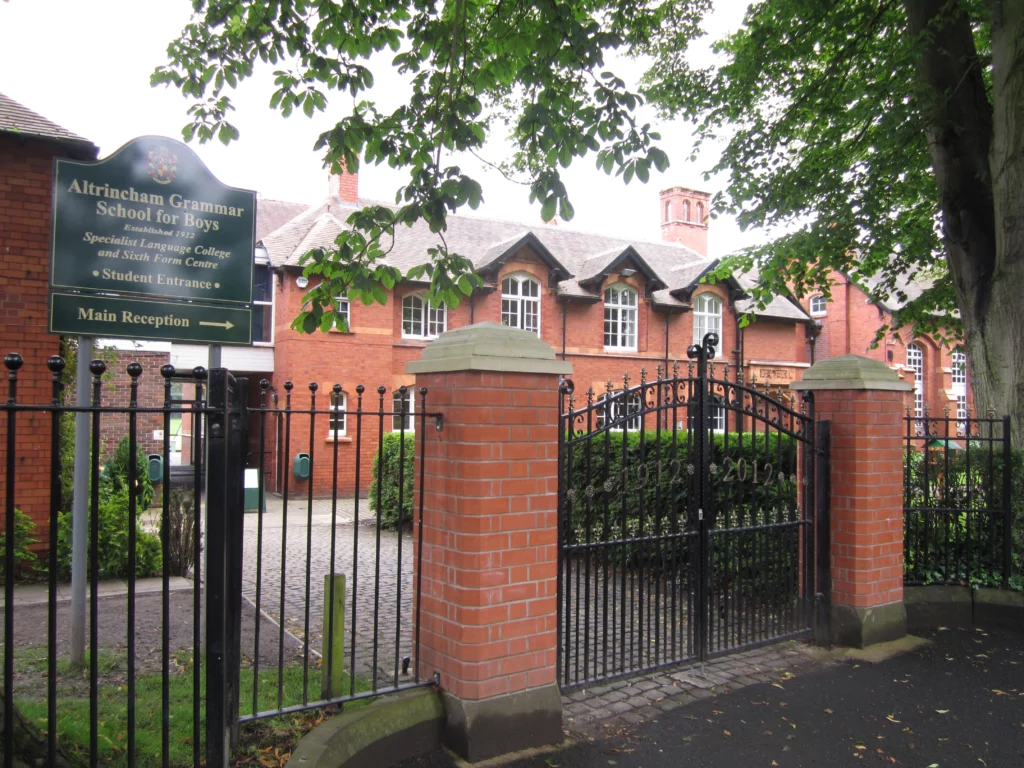
Altrincham Grammar School for Girls is a member of the Trafford Grammar Schools Consortium and is a high-performing girls’ grammar school located in Bowdon, Altrincham, in the Trafford Council area.
Admissions
There are currently 1,408 pupils. The school offers 204 places in Year 7, and the admissions process involves taking the Trafford Grammar Schools Consortium 11 plus exam.
To apply to Altrincham Grammar School for Girls, parents need to register their child for the Trafford 11 plus exam during Year 5. The registration period opens in early May and closes in late June. After taking the exam, pupils’ scores are age-standardised and combined to give them a total score across both papers. The total scores are then placed into one of four bands, and children are prioritised based on their band, with children in Band W being the highest priority for admission.
Exam Results
The school was founded in 1902 and has a strong reputation nationally for outstanding results at GCSE and A-level, as well as sporting and cultural successes. The 2021 A-level results for this school were impressive, with 95% of students achieving A–B grades. Similarly, the GCSE results were also strong, with 96.8% of students achieving grades of A/A/9/8/7.
6. Pate’s Grammar School
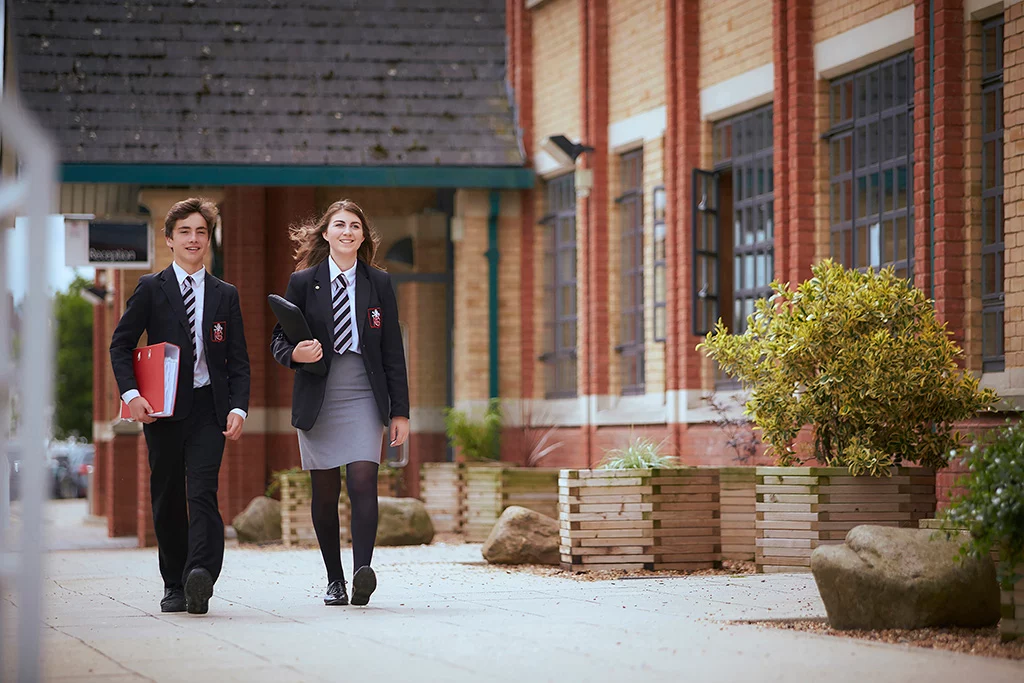
Pate’s Grammar School is a mixed grammar school for boys and girls aged 11-18. The school is located in the Cotswolds in southwest England and consistently receives an “outstanding” rating from Ofsted. Pate’s Grammar School is known for its high-quality teaching, exceptional progress among students, and positive and fun co-curricular programs. The school has a social mobility initiative called “Shaping Futures” that aims to widen horizons, raise ambitions and provide knowledge and skills for children from all backgrounds.
Admissions
The school has 1,200+ pupils and is ranked sixth in the National Parent Power rankings. The school accepts 150 students in Year 7, and the registration for the 11 plus exam opens on 22nd May 2023, closes on 30th June 2023, and the exam date is 16th September 2023.
Parents must register their children for the 11 plus exam and apply separately for a school place at Pate’s Grammar School. Children who meet the qualifying standard may be named as a preferred choice on the common application form.
11 Plus Exam Format
The 11 plus exam at Pate’s Grammar School consists of two papers. 1 – a verbal skills exam that assesses comprehension, vocabulary, and verbal reasoning. 2 – non-verbal skills exam that assesses non-verbal reasoning and mathematical knowledge, skills, and understanding. The exam is multiple-choice, and the allocated time for completing the test questions is 45 minutes for each paper. There is no pre-defined pass mark for the exam. The qualifying group comprises the 250 children with the highest results. Pate’s Grammar School has oversubscription criteria that it uses when selecting students, and there are 150 places available in Year 7.
Exam Results
The A-level results are 95.4% A*–B, while the GCSE results are 95% A*/A/9/8/7.
7. St Olave’s Grammar School

St Olave’s Grammar School is a selective grammar school for boys in the London Borough of Bromley, and it admits girls in the sixth form.
Admissions
The school is highly selective and receives over ten applications per place in Year 7. The admissions process includes the school’s own Selective Eligibility Test (SET). This consists of logic, maths, and English questions. The top 450 candidates are invited back to sit the second round of tests, which includes English and maths. The school admits pupils based on academic ability, as determined by the SET and the stage 2 test.
Exam Results
The A-level results in 2021 were 96.4% A–B and GCSE results were 91% A/A/9/8/7 for this school.
8. King Edward VI Grammar School (Essex)
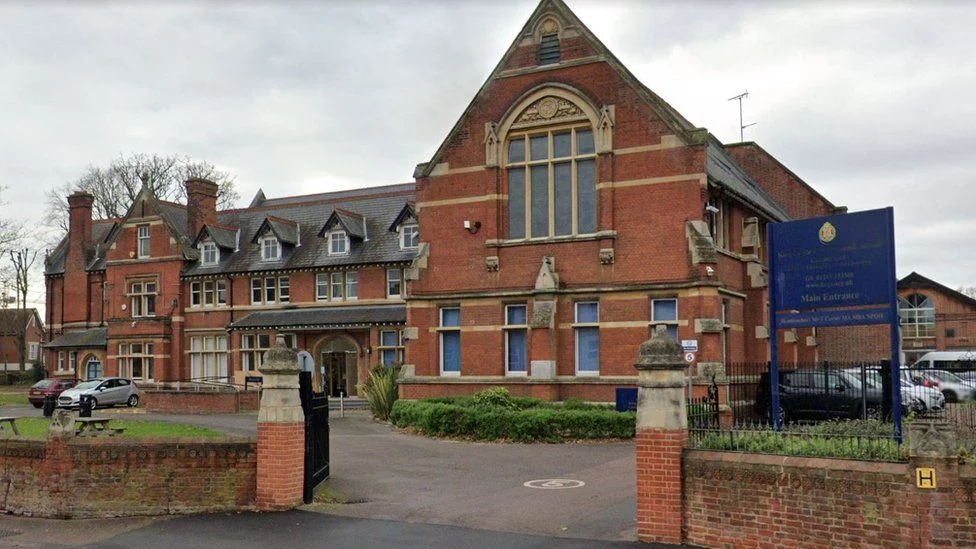
King Edward VI Grammar School is a boys-only school, located in Chelmsford, Essex, UK.
11 Plus Exam Format
The school is a member of the CSSE, and the entrance examination for Year 7 is the CSSE 11 plus. The exam consists of two papers in English and Maths. The cut-off score varies each year, depending on the number of applicants and the school’s capacity, but typically ranges between 345 and 366.
Exam Results
The school was founded in 1551 and has an excellent academic reputation, consistently ranking among the top grammar schools in the country. The results for this school in 2021 were impressive. 93.3% of A-level students achieved grades A–B, while the GCSE results showed 93.8% of students achieving A/A/9/8/7 grades.
9. Colyton Grammar School
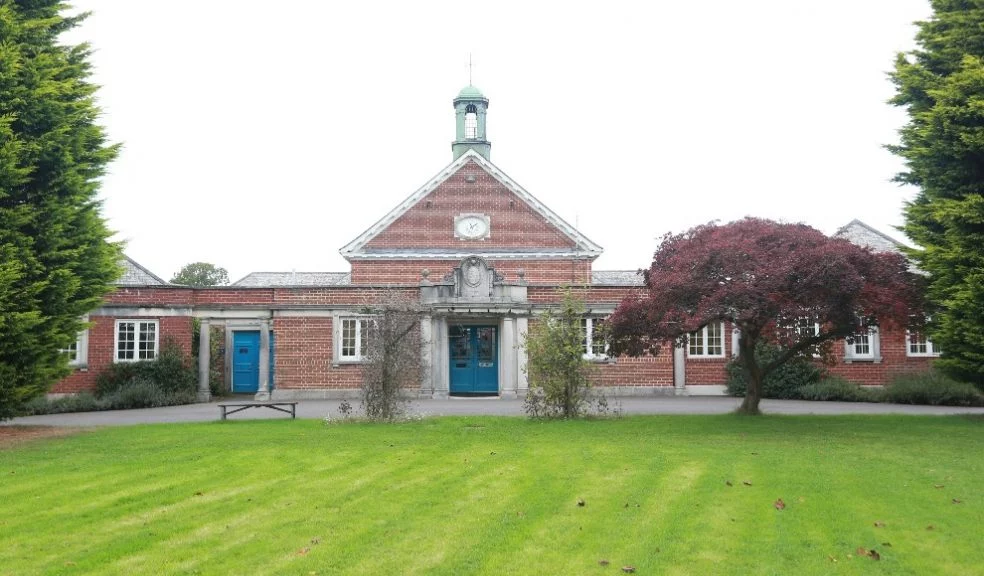
Colyton Grammar School is a co-educational school located in East Devon that was founded in 1546. It is the largest facilitator of the Duke of Edinburgh Award Scheme in the southwest and offers a variety of clubs, sports teams, and outdoor learning opportunities.
Admissions
For Year 7 admissions, the school has 155 places available, and the 11 plus exam registration opens on 1st April 2023 and closes on 8th September 2023, with the exam taking place on 23rd September 2023. The Common Application Form (CAF) deadline is 31st October 2023, and the national school offer day is 1st March 2024.
11 Plus Exam Format
Colyton Grammar School has its own admissions authority, and the 11 plus exam comprises two test papers, each lasting around 50 minutes, assessing questions in Maths, Verbal Reasoning, and Non-Verbal Reasoning. The exam is on Saturday, 23rd September 2023, and there is no set pass mark.
Exam Results
Colyton Grammar School is ranked highly among state schools in the southwest of England, consistently ranking first in Devon for its exam results and second in the whole of southwest England in 2022. The school achieved impressive results with 94.1% of A-level students achieving A–B grades in 2021, while their GCSE results were 90.1% A/A/9/8/7.
10. King Edward VI School (Warwickshire)

King Edward VI School is a well-known grammar school for boys located in Chapel Lane, Stratford-upon-Avon, CV37 6BE. In 2020, the school was named Secondary School of the Decade by the Sunday Times.
Admissions
The 11 plus registration for the school’s Year 7 admissions opens on 8th May 2023 and closes on 30th June 2023.
11 Plus Exam Format
The Warwickshire 11 plus exam, which consists of two papers covering English comprehension, Maths, Verbal Reasoning, and Non-Verbal Reasoning, will be conducted in mid-September 2023. The school has an automatic qualifying score, and admission offers are made based on oversubscription criteria.
Conclusion
The schools mentioned above represent some of the best educational institutions. Each one offers unique advantages and opportunities to students, whether it’s through innovative programs, exceptional faculty, or state-of-the-art facilities. However, what makes these schools truly stand out is their commitment to excellence and their unwavering dedication to providing their students with the best possible education.
Ultimately, the choice of which school to attend is a deeply personal one, and it’s important to consider factors like location, cost, and fit in addition to academic reputation. Nonetheless, if you’re looking for a world-class education, any one of these top 10 schools is sure to provide it. We’ve mentioned some of the London’s top grammar schools as well and also, the southeast of England, particularly Kent’s grammar schools, represents one of the strongest networks of selective education in the country.
If your child needs extra help with their 11 Plus exam, you can count on Edumentors online platform to provide 11Plus online tutors from top leading UK universities.
FAQ About Grammar Schools
What is the Difference Between Grammar Schools and Private Schools?
Grammar schools and private schools are two types of secondary schools in the UK. While grammar schools are free and admit students based on academic ability, private schools charge tuition fees and also select students based on their academic abilities. However, both schools are known for their emphasis on academic achievement, and the schools’ students often achieve excellent results.
In terms of class sizes, private schools usually have smaller class sizes. This means that students get more individual attention from teachers. Teachers can also tailor their teaching to students’ strengths and weaknesses. Private schools also tend to have better facilities. These include extensive sports and extracurricular programs, which contribute to a more well-rounded education.
In terms of subjects, private schools offer a greater range of subjects, including languages like French, German, Spanish, Latin, Greek, Russian, and Mandarin, and other less common subjects like Classics, Philosophy, and History of Art.
On the other hand, grammar schools tend to accept students from a wider range of socioeconomic backgrounds than private schools. Grammar schools also offer more opportunities for brighter students, as entry exams ensure that students have a similar baseline ability, enabling teachers to stretch and challenge the brightest students.
Furthermore, behaviour issues are less of a problem at grammar schools, allowing more time to be dedicated to learning.








